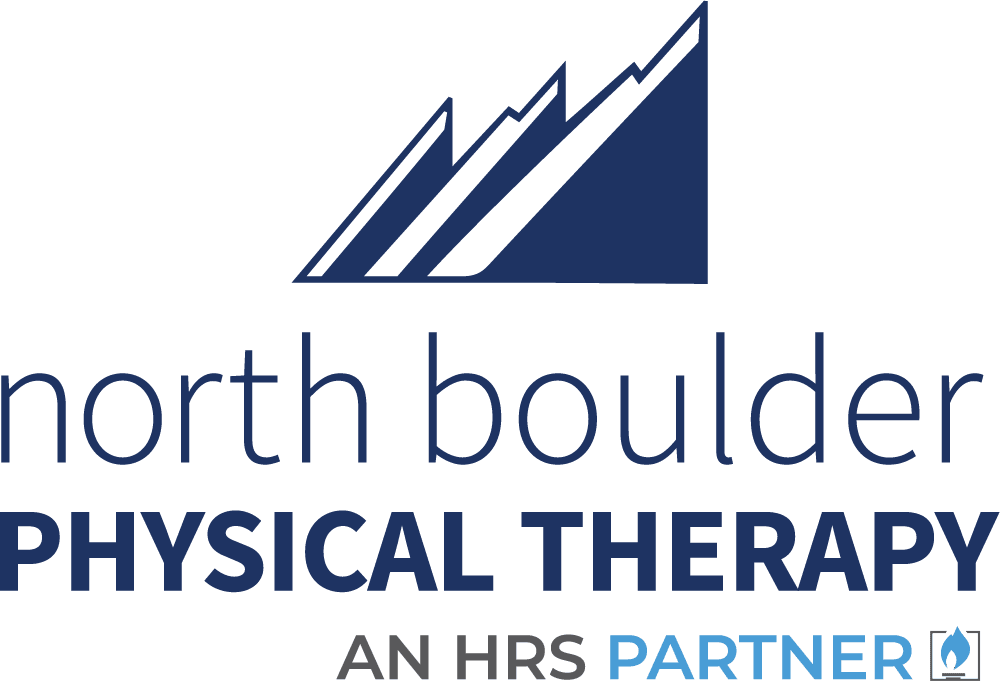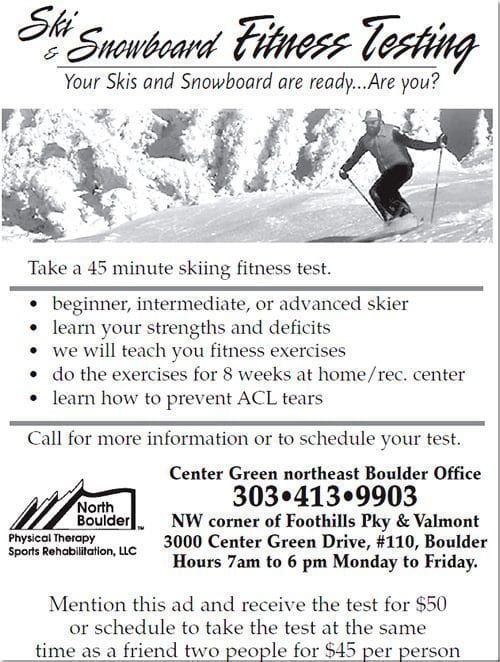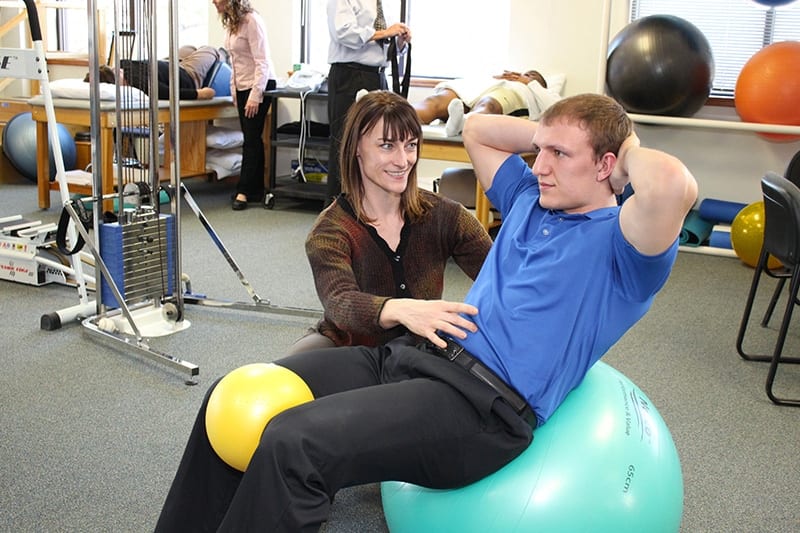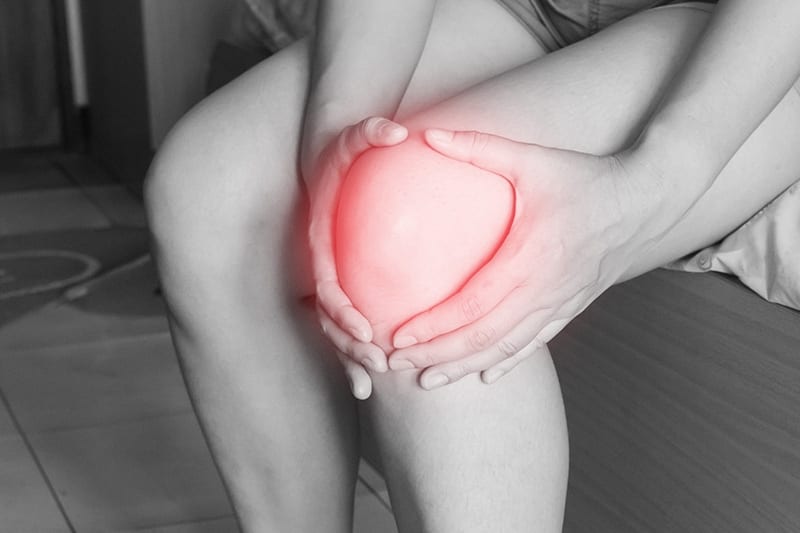 Today, our team at North Boulder Physical Therapy discuss common snowboarding injuries we can help you avoid. Nothing takes the fun out of a great Colorado ski or snowboarding trip to the mountains like an injury, whether shoulder, wrist, head, knee, or ankle. So, we encourage you to sign-up for our skiing and snowboarding fitness training program to prepare you for a safe day on the slopes.
Today, our team at North Boulder Physical Therapy discuss common snowboarding injuries we can help you avoid. Nothing takes the fun out of a great Colorado ski or snowboarding trip to the mountains like an injury, whether shoulder, wrist, head, knee, or ankle. So, we encourage you to sign-up for our skiing and snowboarding fitness training program to prepare you for a safe day on the slopes.
The goal of our 8-week program is to reduce your risk of injury, keeping you safe and ready for a fun adventure. To get the full benefit of this program now is the perfect time to get started. Snow season will be here before you know it. If you start now, you will be ready when the slopes open. Not a snowboarder? Training is just as ideal for skiers!
When you strap a snowboard to your feet and take off down the mountain, maybe even doing jumps and fancy turns, it can be dangerous. You need balance, skill, and strength to be a good snowboarder. But injuries can occur in any sport. Snowboarding is no exception, neither is skiing. Let’s talk about what you can expect from our program.
North Boulder Physical Therapy fitness training for skiers and snowboarders
You will complete a 45-minute fitness test that will assess:
- Cardiovascular Flexibility
- Plyometric Ability/Control
- Strength
- Balance
- Ski/Snowboard Specific Strength
From this test, we will determine your:
- Skill level – beginner, intermediate or advanced
- Strengths and deficits
- Potential for injury
Then you will train for 8-weeks with the goal of improving your strength and skills, as well as help you prevent falls and injuries. We will work with you on any fitness deficiencies that are identified from the tests, teaching you fitness exercises and how to prevent injuries. You will continue to do the exercises throughout the 8 weeks.
At the end of the North Boulder Physical Therapy fitness program, you will retake the test and see how much you have improved. Then you will know just how ready you are for skiing and snowboarding on the Colorado slopes.
Common snowboarding injuries we can help you avoid
Our therapists want you to be safe on the slopes and go home without injuries. So, let’s look at the most common snowboarding injuries, how they happen, and how you can protect yourself.
Wrist Injuries
Snowboard wrist injuries happen from overuse and falling. Let’s face it, most people fall sometimes while snowboarding or skiing, and when you do, it’s only natural to put your arms out to stop the fall. Before you know it, your hand or wrist is hurt.
- What kind of wrist injuries? A fall can cause injuries to the fragile and complicated wrist joint. Believe it or not, there’s a name for this. It’s called FOOSH. Seriously. It stands for Falling Onto an Outstretched Hand. This act of self-preservation has caused many sprained and broken wrists. If you suffer a wrist impact you should go to the hospital to have it x-rayed. If it is broken you will need an extended time to heal. Even a joint wrist sprain may put you out of commission for several weeks.
- How to prevent wrist injuries? You may want to wear wrist guards which can protect you from sprains and broken bones. Some wrist guards are even attached to the gloves and can help prevent common snowboarding injuries.
Ankle Injuries
Ankles strains and more are common snowboarding injuries, particularly if there is a fall. In fact, the injury is often called a snowboarder’s ankle because it is so frequent. It involves a fracture of the lateral process of the talus bone.
If you have a bad landing from a jump and the boot does not give enough support to the foot area, the ankle might be injured. Compared to skiing boots, snowboarding boots are softer, so, they’re more comfortable and many people like them better, but they also don’t offer as much support as ski boots when you fall or twist your ankle.
- What kind of ankle injuries? A bad landing can cause an ankle sprain or a fracture. Either one will probably require a hospital visit and possibly several months of recuperation and no skiing or snowboarding for a period of time. If you have a broken ankle it can be very serious. The ankle joint is complex and often requires surgery to realign the broken bones.
- How to prevent ankle injuries? If you can wear sturdy boots it will give you the kind of support you need when landing from a jump or bump. The strength and skill you get from the North Boulder Physical Therapy training program will help you avoid snowboarding ankle injuries.
Knee Injuries
Now let’s talk about the knee, which is one of the most common snowboarding injuries we can help you avoid. A hard landing after a jump or a fall can create a lot of pressure on the knee joint. The older you are, the easier the knee is to injure.
- What kind of knee injuries? A knee injury can also result from a rapid twisting motion, or just quickly changing direction on a snowboard as you are going down the mountain at a high speed. These kinds of actions put unusual pressure on the knee joint and can damage the ligaments. If the injury is not too bad you can apply ice and rest the knee to help its recovery.
- How to prevent knee injuries? If your knee needs some support you can use a special knee brace that will protect the joint and reduce the impact to it, particularly with fall or sudden twists. Our fitness program will help you increase your balance and specific strength for snowboarding. When your body is strong, injuries are reduced.
Shoulder Injuries
When snowboarding a hit or fall on the shoulder can cause several different kinds of injuries. These are yet more common snowboarding injuries we can help you avoid.
- What kind of shoulder injuries? The rotator cuff, which involves the muscles and tendons around the shoulder joint, is a common injury for snowboarders. These tendons and muscles keep the bone at the top of your arm in the socket of the shoulder. A fall can cause an injury that can be painful and limit the shoulder’s motion.
Shoulder injuries are most often treated with anti-inflammatory drugs and applying ice to the hurt area to reduce the swelling. Physical therapy for rotator cuff rehabilitation can help regain strength in the shoulder.
Another common injury is a broken collarbone, which can also happen from the FOOSH when the brunt of the fall goes up through the arm and into the collarbone. This type of injury is painful and while a sling instead of a cast is usually used, it can be hard to heal.
- How to prevent shoulder injuries? It’s difficult to prevent shoulder injuries but learning how to fall while reducing the impact to the shoulder can help. Our fitness program will improve your ability, control, balance, and strength.
Head Injuries
Most sports have the potential for head injuries and flying down a snowy mountain on a board doesn’t help. But head injuries in snowboarding aren’t as common as you would think.
- What kind of head injuries? From rocks and trees to other people, there are many obstacles on the mountain. A high-speed direct impact can lead to a fractured skull, brain damage, and even death. A concussion is more likely, which happens when the brain moves against the skull during an impact. The symptoms of a concussion may be confusion, memory loss, disorientation, headaches, dizziness and nausea, and changes in hearing and sight. You should always have a doctor examine you to determine if there are any injuries after a head trauma, especially if there is a loss of consciousness.
- How to prevent head injuries? There is growing awareness that a helmet while snowboarding can reduce the risk of serious head injury from a fall by up to 60 percent. That is significant. Now snowboarding helmets come in fun styles and are being worn by the professionals, so you should, too. Of course, helmets can’t prevent all concussions, so always have a doctor check you out before resuming activity if you’ve had head trauma.
With the proper training, the right equipment, and proper safety gear, you can have a safe time skiing and snowboarding in the beautiful Rocky Mountains without injury. But the proper training is key. That’s why North Boulder Physical Therapy started our 8-week, fitness training program can get you ready for ski and snowboard season. Right now is a great opportunity to start. Our program focuses on the common snowboarding injuries we can help you avoid, including shoulder, wrist, head, knee, and ankle injuries. You can work with our therapists in our skiing and snowboarding fitness training program to prepare you for a safe day on the slopes. Just give us a call to learn more and to schedule your test.



